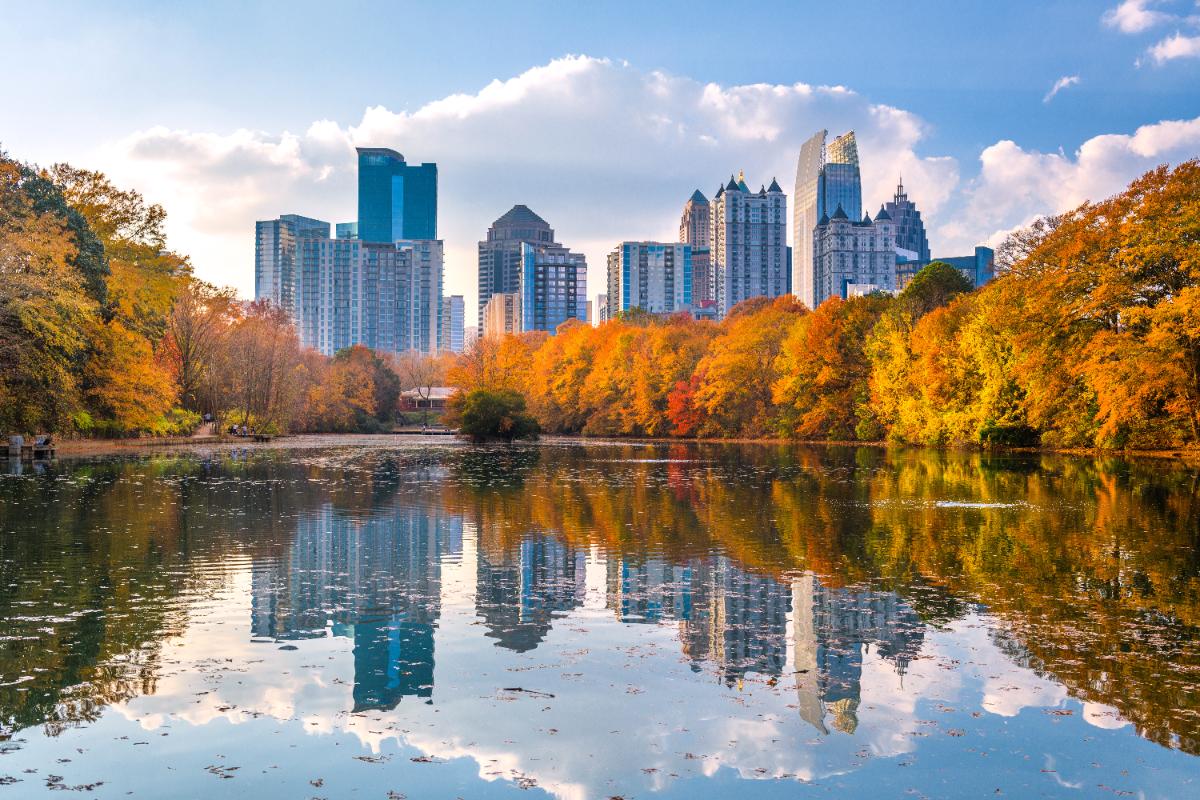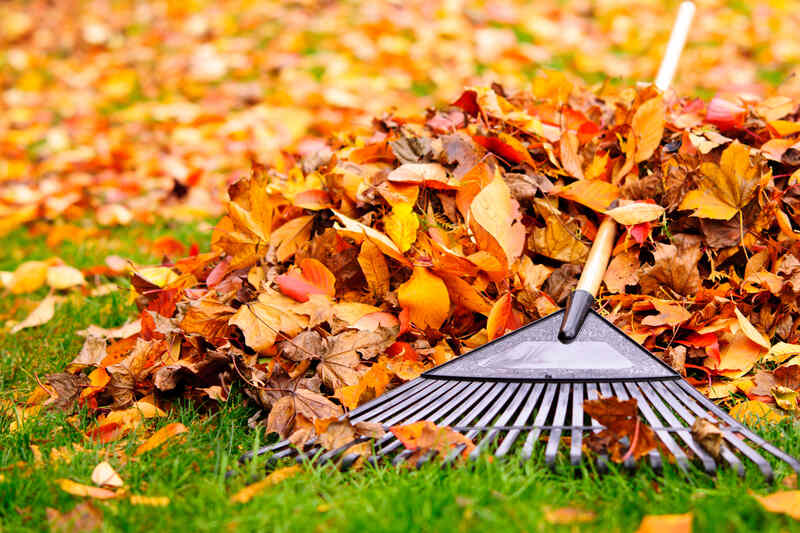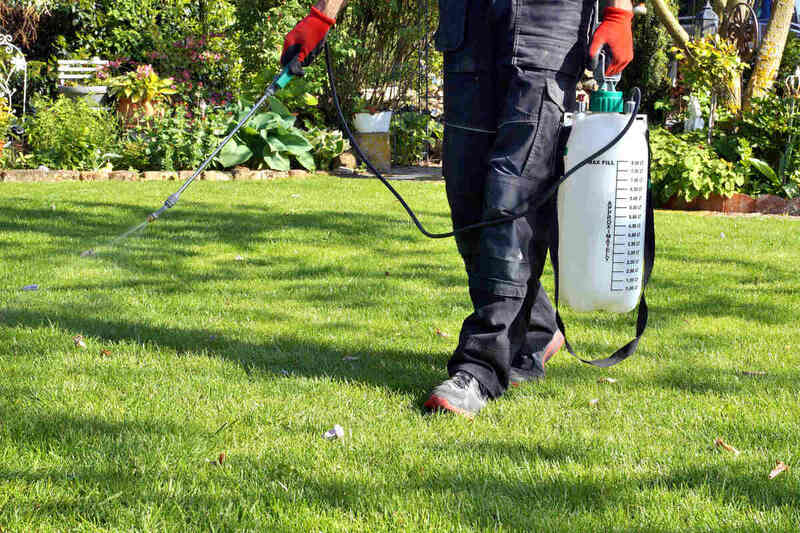
As hot summer temps give way to cooler autumn days in Atlanta, mowing, leaf clean-up, weed control, and pest protection will provide the care your lawn needs for a healthy, dense lawn in the spring.
Here are the 9 essential fall lawn care tasks for your Atlanta lawn.
1. Water as Usual Until Late Fall
The best fall lawn care tip for Atlanta homeowners is to irrigate your Atlanta lawn with 1 inch of water weekly until mid- to late-October. That’s when warm-season grasses, like Bermuda, Zoysiagrass, and St. Augustinegrass, begin to enter dormancy.
When your grass takes on a brownish color, reduce watering to about 0.5 inch a week (or less if it rains). Note: The brownish color doesn’t mean your grass is dead; instead, it’s becoming dormant for the winter.
In mid- to late-December, stop watering altogether, and follow our winter lawn care guide for the Atlanta area.
See Related: How to Water Your Lawn in Fall and Winter
2. Prepare for the Last Mow on Warm-Season Grasses
During fall, mow your lawn slightly shorter than you do during summer. Here’s how high to set your mower blades for the most common Atlanta turfgrass types:
| Grass Type | Recommended Fall Mowing Height |
| Centipedegrass | 1 inch |
| Hybrid Bermudagrass | 1 inch |
| St. Augustinegrass | 2.5 inches |
| Zoysiagrass | 1 inch |
| Tall fescue | 2 inches |
Once warm-season grasses go dormant, typically between late October and mid-November, stop mowing for the winter. For cool-season grass tall fescue, you’ll need to continue to mow throughout winter, although less often.
3. Rake or Mow Fallen Leaves

While mowing may slow down for warm-season grasses, deciduous trees are just beginning to lose their leaves. Removing or mulching leaves is key for your lawn’s health. If left alone, dead leaves form a thick layer, limiting water and nutrient absorption.
To remove, rake the leaves in small piles around the yard or mulch-mow them continually throughout the season, leaving them on the lawn as natural fertilizer.
If you choose to rake, you can use the leaves as natural mulch for:
- Trees
- Flower beds
- Vegetable gardens
Let them dry, then shred the leaves and use them to cover the soil. Dead leaves also make great compost, so read our guide to homemade compost to learn how to use them.
| LawnStarter’s Atlanta leaf removal pros can make quick work of your fall leaf removal. Our customers paid an average of $158 per job for leaf removal last year and gave our pros an average rating of 4.3. |
See Related: Is It Better to Rake or Mulch Leaves?
4. Apply a Pre-Emergent Herbicide
Weed control continues even when warm-season grasses go dormant, so apply a pre-emergent herbicide when the temperatures go consistently below 70 F. This helps prevent common Georgia weeds, such as annual bluegrass, chickweed, and henbit, from taking over your lawn and depleting valuable nutrients.
Pro Tip: If you plan to overseed tall fescue, skip this part of fall weed control. Once applied, the herbicide stops any seed from germinating (including grass seeds) for 2 to 3 months. Once the new growth appears and you have mowed at least two times, then you can address weed control.
5. Don’t Skip Pest Control

Common lawn pests in Atlanta don’t take time off in the fall, so keep an eye on your lawn to catch them as soon as possible. If spotted, apply the appropriate pesticide to remove them. If you prefer, contact an Atlanta LawnStarter lawn care pro to apply the proper pesticides.
Pro Tip: Fertilize tall fescue moderately from September through November to allow roots to recuperate over winter and survive any pest attack.
6. Aerate Your Fescue Lawn
For lawns with tall fescue, aerate your grass from early to late October. This leaves behind tiny holes that improve drainage and lead air, water, and nutrients to the root zone faster.
Rent or invest in a good-quality core aerator to loosen the soil DIY in the fall, or consider hiring a LawnStarter aeration pro in Metro Atlanta.
7. Overseed Tall Fescue
In September and October, overseed tall fescue to make the lawn thick again and remove dead spots. To prepare for overseeding:
- Mow and bag the clippings.
- Aerate to help seeds build healthy roots.
- Spread starter fertilizer.
Pro Tip: October is also the ideal time to start a new lawn with tall fescue in Atlanta’s climate.
See Related: How to Overseed a Lawn in 8 Simple Steps
8. Fertilize Tall Fescue
Tall fescue is the only grass still growing actively during fall in Atlanta. To promote growth, fertilize tall fescue in early September and, optionally, in November. Tall fescue thrives with a balanced fertilizer in fall, so apply 1 pound of nitrogen per 1,000 square feet. Using a fertilizer with slow-release nitrogen is best.
See Related:
9. Test Soil pH
Test the soil pH early- to mid-fall to ensure it has a pH of 5.5 to 6.5.
If the pH is low, you can add granular lime to increase the pH. If the pH is high, you can add soil amendments such as sulfur, peat moss, or acidic compost to decrease the pH. Applied in October or November, lime or soil amendments will prepare your lawn soil in time for May fertilization.
See Related:
- How to Tell If Your Lawn Needs Lime
- 5 Signs of Alkaline Soil in Your Lawn (High pH)
- 5 Signs of Acidic Soil in Your Lawn (Low ph)
- How to Change Your Soil pH
FAQ
In most cases, yes. However, read all instructions with each application for the proper watering guidelines to ensure you apply the correct amounts of water at the right times.
Yes, but you need to adjust the timing for less frequent watering than in summer. You will need to shut it off once regular watering is no longer needed for the season.
Enjoy a Healthy Atlanta Lawn in the Fall

Atlanta lawn care continues throughout fall. You need to rake leaves and mow a certain way, keep track of soil temperature, and kill pests. If you’re feeling overwhelmed and want more time with your family, leave this to a pro. Find a LawnStarter pro in Atlanta and enjoy a healthy lawn in the fall.
Read Next:
- 12 Spring Lawn Care Tips for Atlanta
- 9 Summer Lawn Care Tips for Atlanta, GA
- 8 Tips for Maintaining Your Atlanta Lawn
Main Image: Atlanta’s skyline from Piedmont Park in autumn. Photo Credit: Kovacs / Adobe Stock